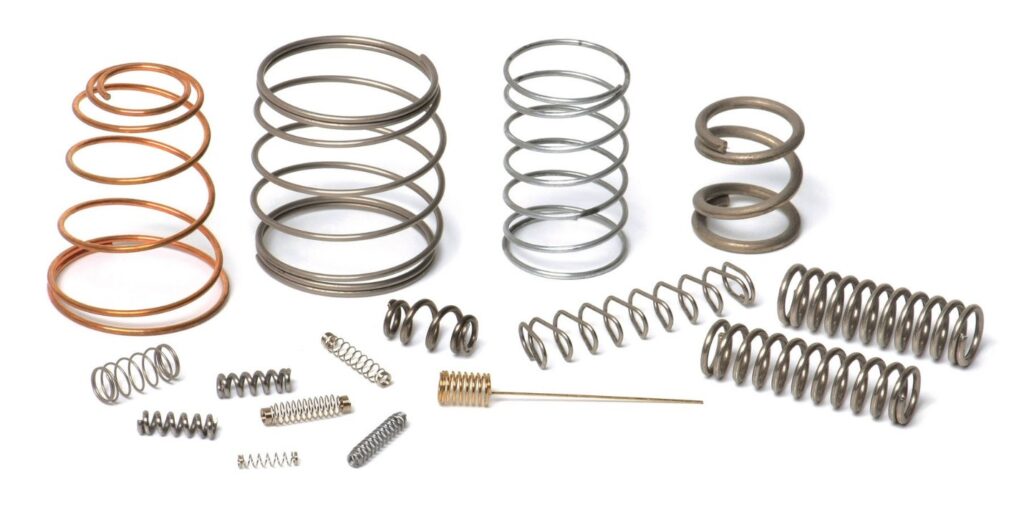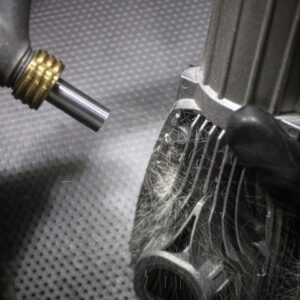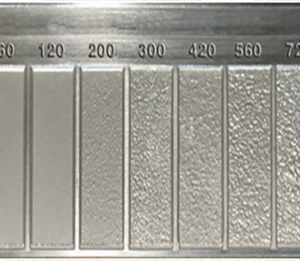Mechanical systems depend on springs for shock absorption, energy storage, and movement control. Automotive suspensions, industrial equipment, and consumer electronics need them. Hooke’s law governs spring operation and states that its extension or compression requires a force proportionate to displacement. The law describes how springs store and release energy. Knowing the types of springs and applications benefits engineering and manufacturing performance.
Basic Principles of Springs
Hooke’s Law and energy storage and release across applications help understand springs. Hooke’s Law, F=kx, defines spring behavior under force. In the equation, F is the force on the spring, x is its displacement from equilibrium, and k is its stiffness. Springs absorb mechanical energy when compressed or stretched and release it when they return to their original form. Shock absorption, energy storage, and movement control depend on springs. Remember, different types of springs meet different mechanical needs for the complex balance of forces and energy in engineering.
Main Types of Springs
Compression Springs
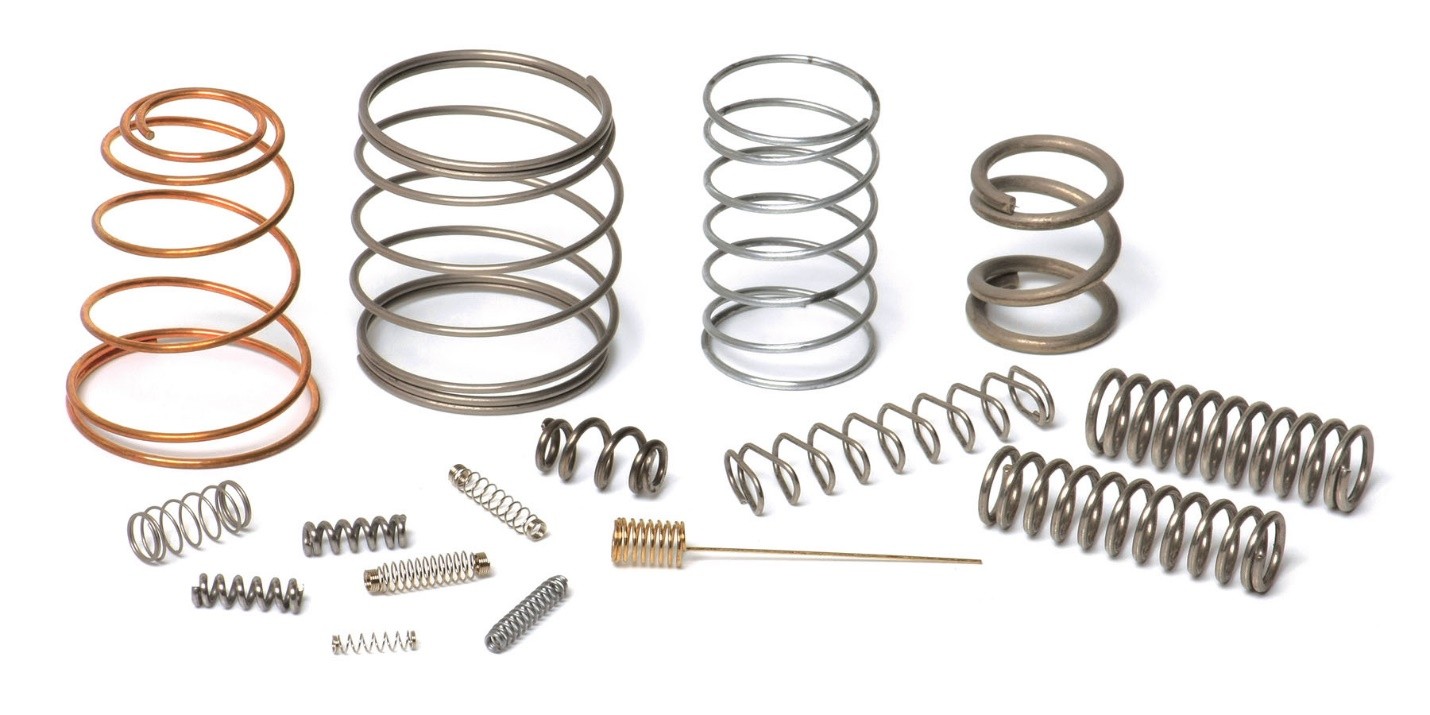
Among the types of springs, compression springs resist compressive forces, shorten under load, and store potential energy. Automotive suspensions depend on them to absorb road shocks and smooth the ride by compressing and expanding. Industrial presses, stamping machines, and valves use compression springs for precise control and functioning. They open and close devices to stamp materials and control fluid flow. Compression springs provide support and regulated movement for comfort and usage in mattresses and pens. The springs come in hourglass, barrel, and conical forms across uses. The design variations maximize space efficiency or distribute force differently.
Extension Springs
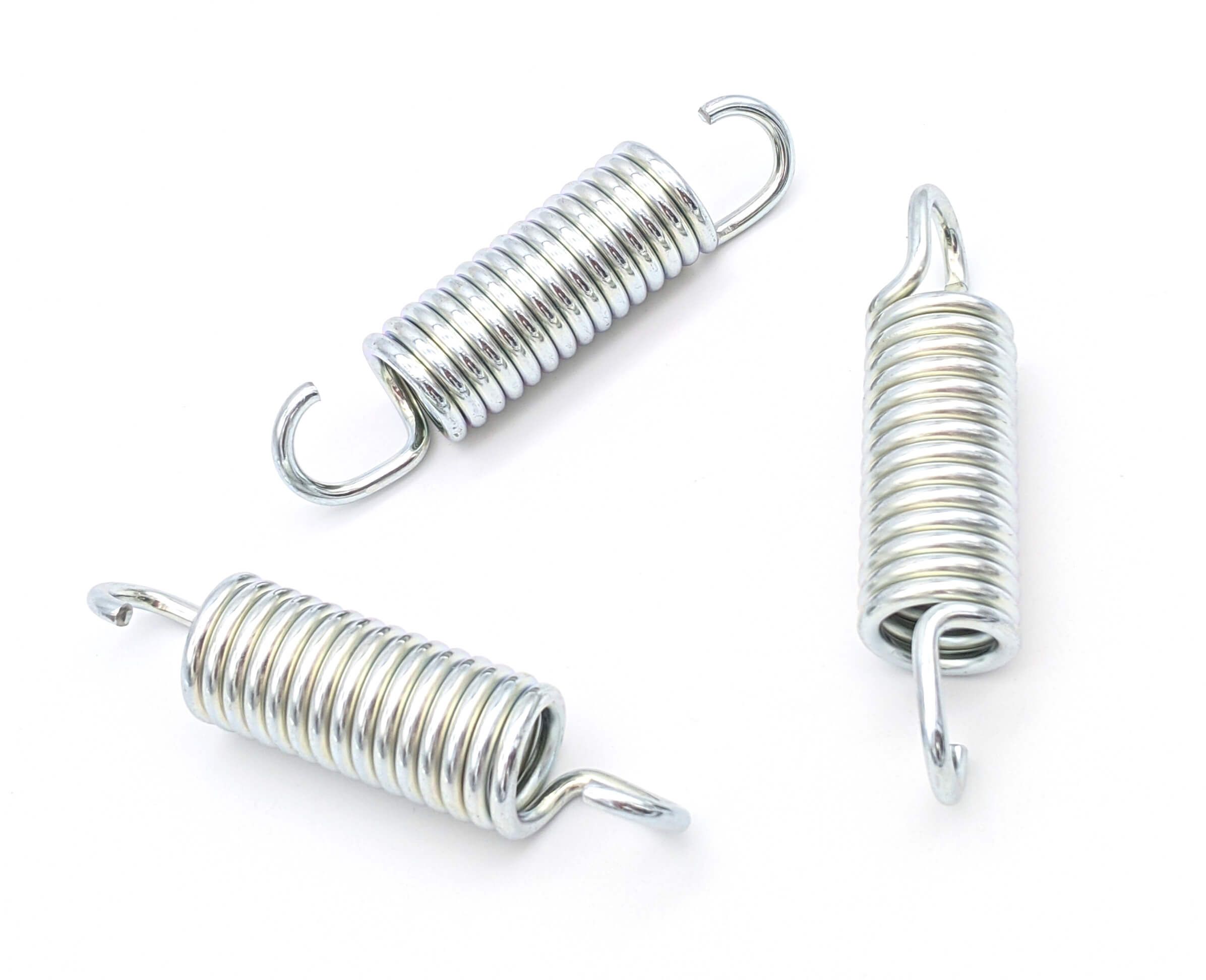
Another important type of spring is extension springs, which stretch under stress and contract when the force is removed. Such springs are employed in garage door systems to counterbalance the door’s weight and release energy when opening and shutting. Moreover, trampolines use extension springs to safely bounce people by stretching and contracting. Plows and cultivators use extension springs for ground contact and depth during agricultural activities. Hooks, loops, and coil patterns at the ends of extension springs allow them to connect to components.
Torsion Springs
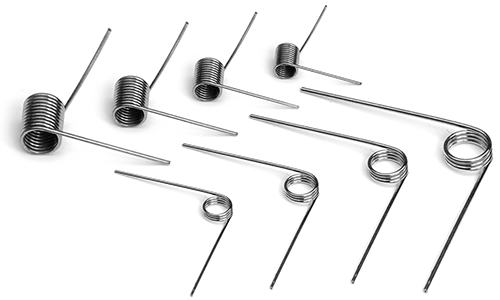
In many mechanical systems, torque springs are the types of springs that store potential energy while twisting their axis. They store and release energy via torsion to balance the door’s weight and provide effortless, regulated movement in garage door systems. Torsion springs within clothespins acquire energy when opened and release it when closed to grip clothes. Furthermore, torsion springs absorb shocks and stabilize vehicles over rough terrain. Torsion springs may be single-bodied or double-bodied with straight, offset, or hinged ends to fulfill design requirements.
Other Notable Types of Springs
Helical Springs
Helical springs are flexible and store energy, absorb shock, and maintain a force between surfaces. Coiling a wire into a helical form lets it compress, lengthen, or twist, depending on the application. Helical springs are utilized in car suspensions to absorb stress from sloped surfaces. Mechanical watches and clocks use them to store and release energy to power the mechanism. Helical springs provide resistance and elasticity in mechanical systems for stability and functioning.
Leaf Springs
Leaf springs are among the types of springs that include many steel layers, or leaves, that offer stability and shock absorption in car suspension systems. Early carriages and autos relied on them for stability and flexibility on tough terrain. Heavy-duty vehicles like trucks and buses employ leaf springs to keep ground contact and absorb shocks from unstable surfaces. Elliptical, semi-elliptical, quarter, three-quarter, and transverse leaf springs exist. For example, the semi-elliptical leaf spring is popular owing to its expanded lifetime and inexpensive maintenance.
Disk Springs
Disk springs, or conical washers, are specialty springs in narrow places to create force or absorb stress. The conical form absorbs stress and limits deflection for applications with limited space but great load-bearing capability. For instance, clutch brakes and other high-stress mechanical systems employ Belleville disk springs. Threaded fasteners and bolts employ crescent washers, or curved disk springs, to withstand vibration-induced loosening. Slotted disk springs minimize spring load and enhance deflection for automated gearboxes and clutches. Architectural wave disk springs absorb axial compression stress for predictable loading and cushioning.
Constant Force Springs
Contrary to Hooke’s rule, constant-force springs are one of the types of springs that retain a near-constant force throughout their range of motion. Such pre-tensioned spring steel strips are meant to be coiled and released when not in use. Clock mechanisms employ them to store and release energy evenly to regulate time. What is more, adjustable monitors and window sashes use constant-force springs to balance weight. Although called “constant force,” these springs must overcome their full load to create a near-constant force throughout the extension.
List of Materials Used in Spring Manufacturing
- Spring steel
- Stainless steel
- Beryllium copper alloy
- Ceramic
- One-directional glass fiber composite materials
- Rubber
- Urethane
- Low-alloy steel
- Cold-drawn wire
- Oil-tempered spring wire
- Bainite hardened strip
- SUS310/340
- SWC (high-carbon steel)
- SWPB (piano wire)
- PBW (phosphor bronze wire)
- SWICF
Manufacturing Process of Springs
Steps Involved in the Manufacturing Process of Springs
- Spring production begins with spring wire fed into a CNC coiling machine or mechanical spring winder. The wire is straightened and coiled. Compression springs need accurate coiling to preserve pitch and diameter. Extension springs need hooks or loops at either end.
- Heat treatment relieves stress and improves spring elasticity. The springs are heated and cooled to precise temperatures. So they can endure repeated loads without distortion.
- Grinding flattens the ends of different types of springs for stability. It is important for vehicle suspension springs because unequal end configurations may cause instability.
- Finally, coating and polishing prevent spring corrosion and wear. Common methods include zinc or chrome electroplating, powder coating, and anodizing.
Customization and Specification Using Dedicated Wire Winding Machines
Custom spring production uses dedicated wire winding machines to adjust spring size and quality. For instance, valves in high-performance engines need changing pitches and complicated end forms, which CNC coiling machines can provide. They make springs for specified loads and space limits. Progressive wire winding machines may also make torsion springs with different diameters and lengths for automobile garage door systems that need precise torque characteristics. The machines also support high-carbon steel for heavy-duty industrial springs and stainless steel for medical equipment. They guarantee that each spring fulfills application-specific specifications.
If you want to know which materials and manufacturing processes we use for springs, contact us.

